
How to Use RTD PT100: Examples, Pinouts, and Specs
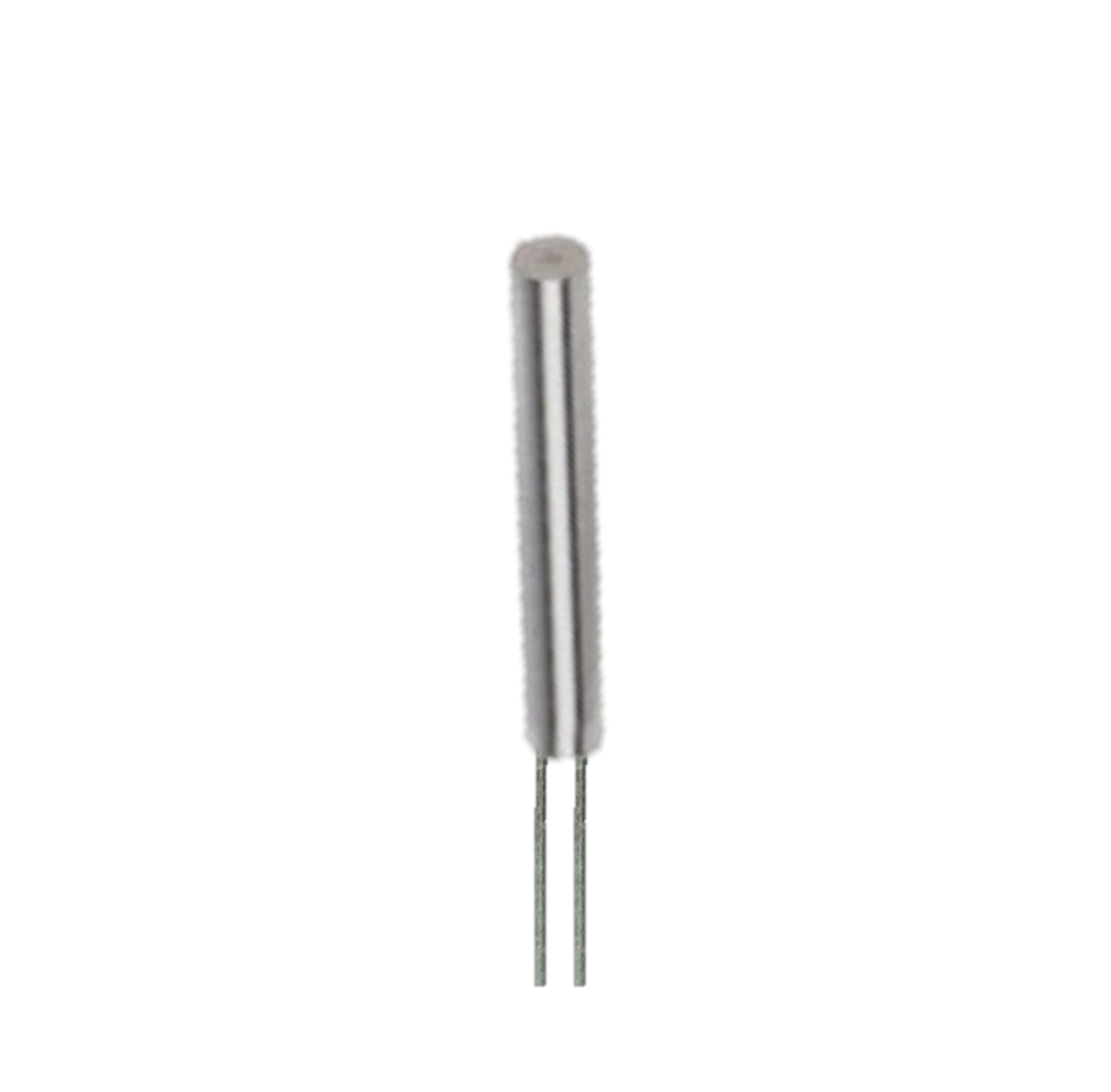
 Design with RTD PT100 in Cirkit Designer
Design with RTD PT100 in Cirkit DesignerIntroduction
The RTD PT100 is a Resistance Temperature Detector that utilizes platinum (PT) with a resistance of 100 ohms at 0°C. It is widely used for precise temperature measurements due to its high accuracy and stability. The PT100 is commonly found in industrial applications, laboratory environments, and any scenario where accurate temperature monitoring is crucial.
Explore Projects Built with RTD PT100
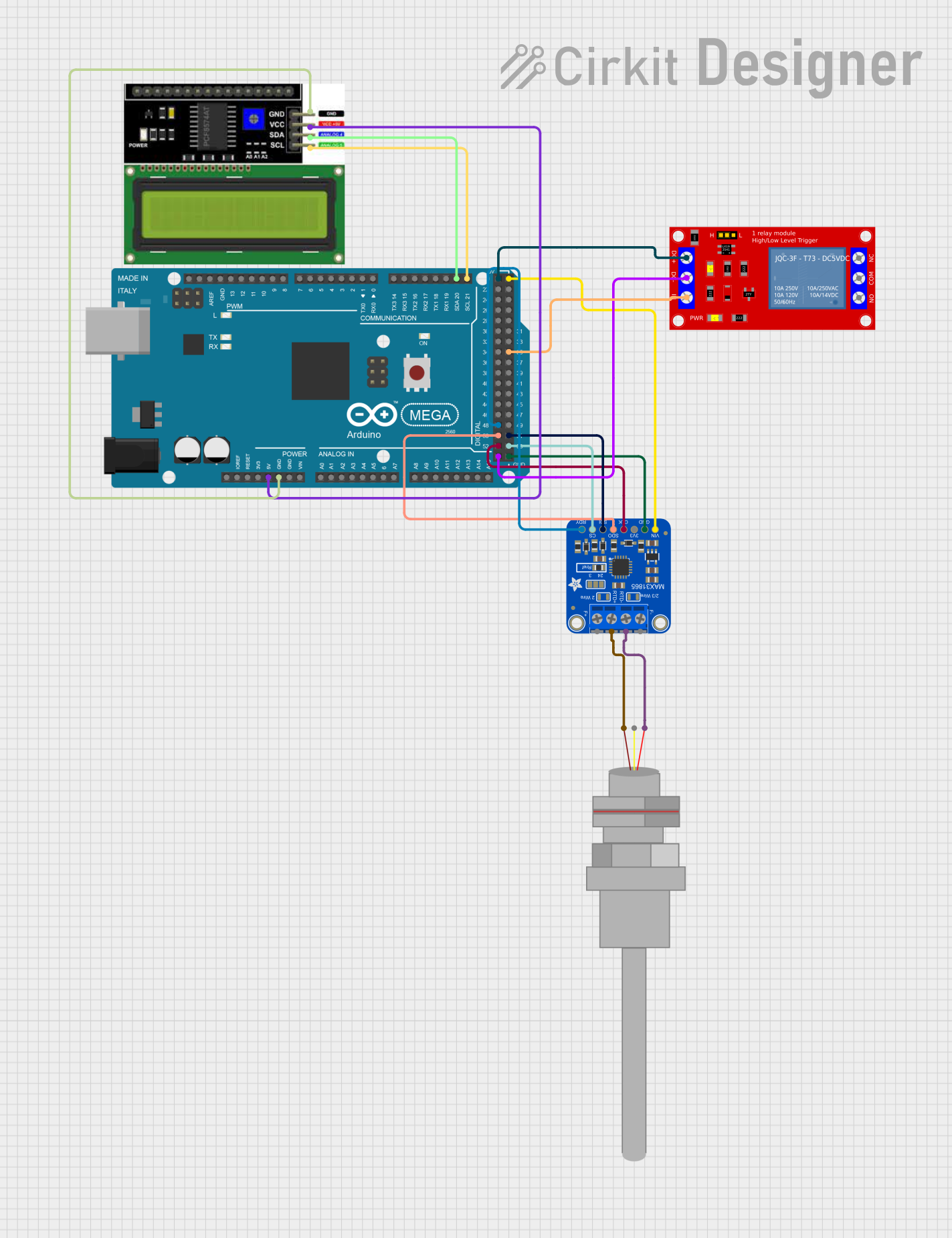
 Open Project in Cirkit Designer
Open Project in Cirkit Designer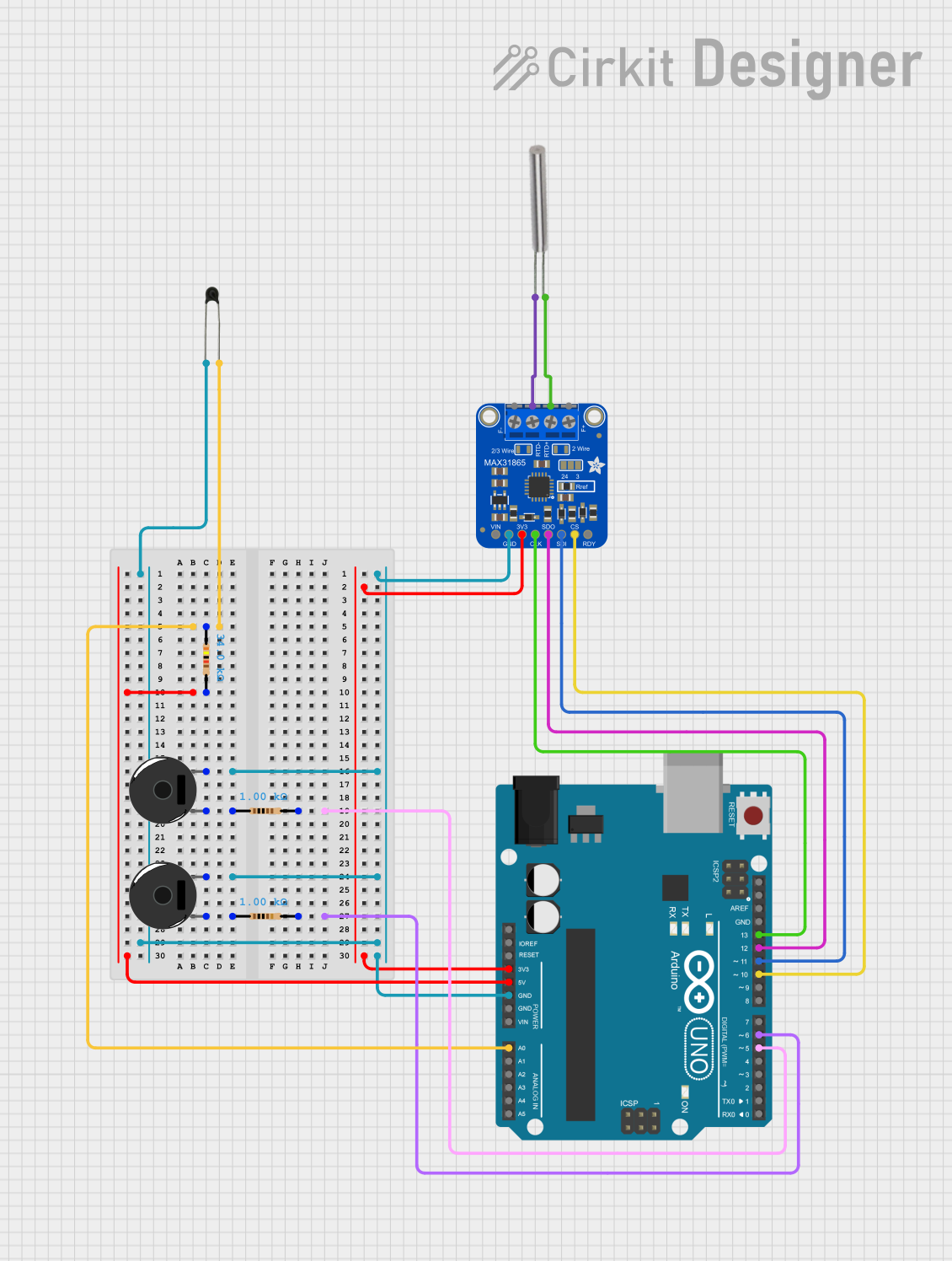
 Open Project in Cirkit Designer
Open Project in Cirkit Designer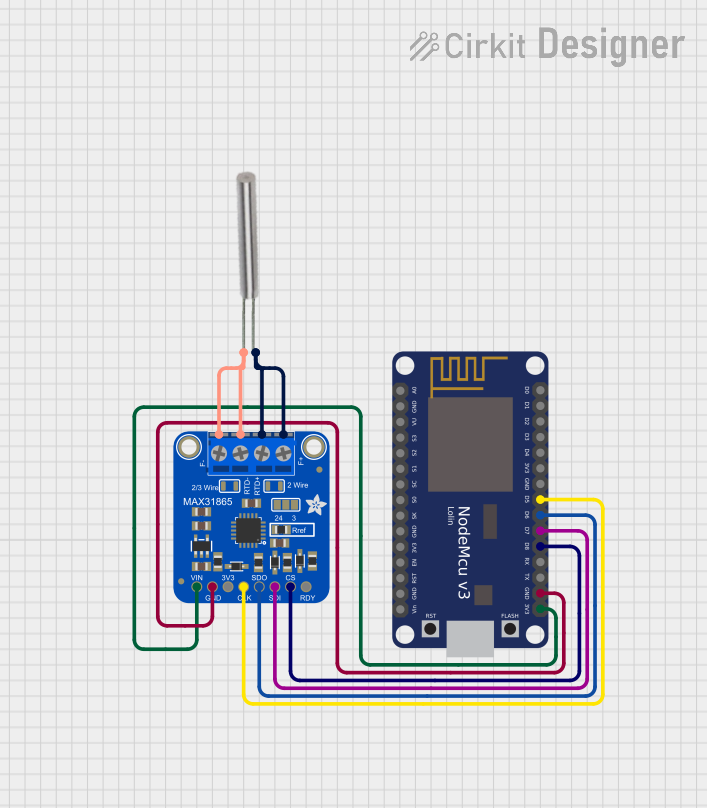
 Open Project in Cirkit Designer
Open Project in Cirkit Designer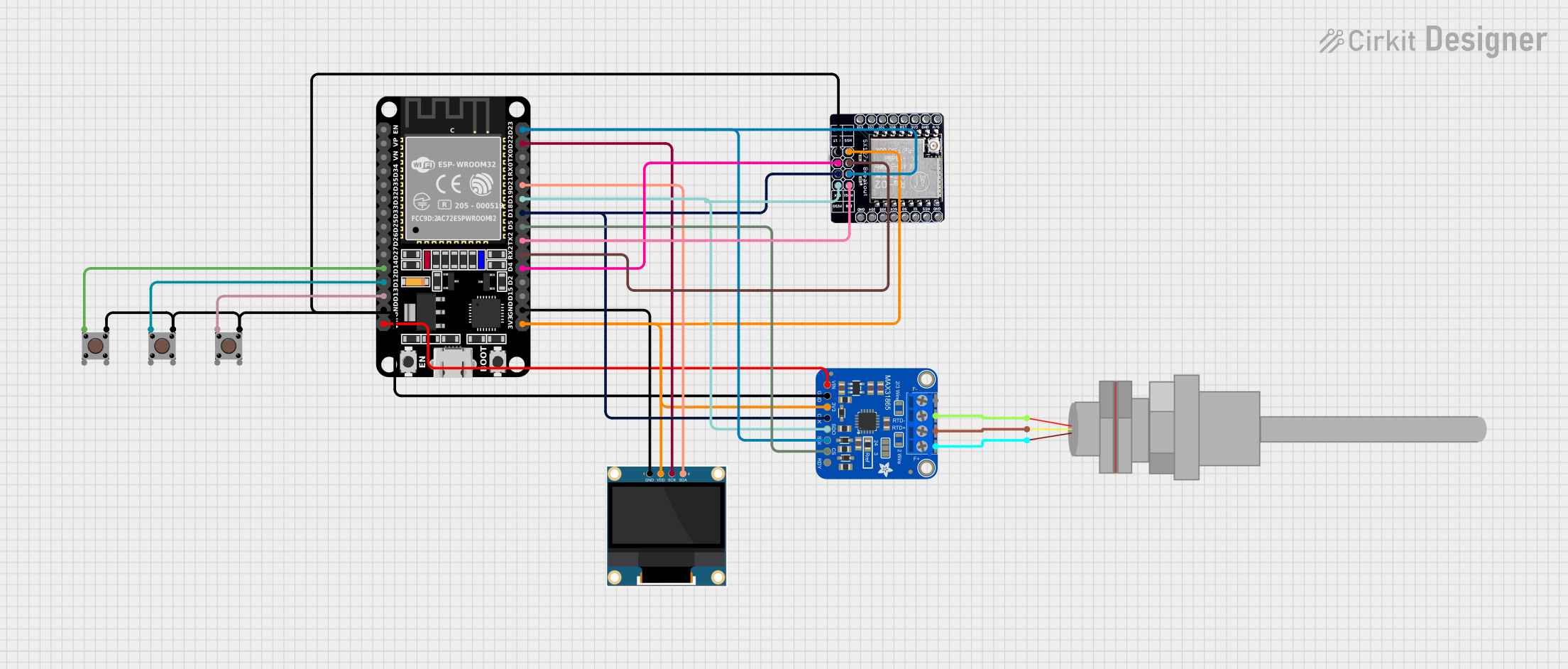
 Open Project in Cirkit Designer
Open Project in Cirkit DesignerExplore Projects Built with RTD PT100

 Open Project in Cirkit Designer
Open Project in Cirkit Designer
 Open Project in Cirkit Designer
Open Project in Cirkit Designer
 Open Project in Cirkit Designer
Open Project in Cirkit Designer
 Open Project in Cirkit Designer
Open Project in Cirkit DesignerCommon Applications
- Industrial process control
- HVAC systems
- Laboratory temperature measurements
- Food and beverage industry
- Medical equipment
Technical Specifications
Key Technical Details
| Parameter | Value |
|---|---|
| Resistance at 0°C | 100 ohms |
| Temperature Range | -200°C to 850°C |
| Tolerance Class | Class A, B, or C |
| Temperature Coefficient | 0.00385 Ω/Ω/°C |
| Material | Platinum |
| Accuracy | ±(0.15 + 0.002*t)°C (Class A) |
| Response Time | 1 to 10 seconds |
Pin Configuration and Descriptions
| Pin Number | Description |
|---|---|
| 1 | RTD Element Lead 1 |
| 2 | RTD Element Lead 2 |
| 3 | (Optional) RTD Element Lead 3 for 3-wire configuration |
Usage Instructions
How to Use the RTD PT100 in a Circuit
Wiring the RTD PT100:
- For a 2-wire configuration, connect Pin 1 and Pin 2 to the measurement device.
- For a 3-wire configuration, connect Pin 1, Pin 2, and Pin 3 to the measurement device to compensate for lead wire resistance.
Connecting to an Arduino UNO:
- Use an RTD-to-analog converter module (e.g., MAX31865) to interface the PT100 with the Arduino.
- Connect the RTD leads to the corresponding terminals on the converter module.
- Connect the converter module to the Arduino UNO as follows:
- VCC to 5V
- GND to GND
- SCK to Digital Pin 13
- SDI to Digital Pin 11
- SDO to Digital Pin 12
- CS to Digital Pin 10
Important Considerations and Best Practices
- Calibration: Ensure the RTD PT100 is calibrated for accurate temperature readings.
- Lead Wire Resistance: Use a 3-wire configuration to minimize errors due to lead wire resistance.
- Shielding: Shield the RTD wires to prevent electrical noise interference.
- Temperature Range: Operate the RTD within its specified temperature range to avoid damage.
Sample Arduino Code
#include <SPI.h>
#include <Adafruit_MAX31865.h>
// Use software SPI: CS, DI, DO, CLK
Adafruit_MAX31865 max = Adafruit_MAX31865(10, 11, 12, 13);
// The value of the Rref resistor. Use 430.0 for PT100
#define RREF 430.0
void setup() {
Serial.begin(9600);
Serial.println("Adafruit MAX31865 PT100 Sensor Test!");
max.begin(MAX31865_3WIRE); // Initialize sensor for 3-wire RTD
}
void loop() {
uint16_t rtd = max.readRTD();
Serial.print("RTD value: "); Serial.println(rtd);
float ratio = rtd;
ratio /= 32768;
Serial.print("Ratio = "); Serial.println(ratio, 8);
Serial.print("Resistance = "); Serial.println(RREF * ratio, 8);
Serial.print("Temperature = "); Serial.println(max.temperature(100, RREF));
delay(1000);
}
Troubleshooting and FAQs
Common Issues and Solutions
Inaccurate Temperature Readings:
- Solution: Ensure proper calibration and use a 3-wire configuration to compensate for lead resistance.
No Temperature Reading:
- Solution: Check all connections and ensure the RTD and converter module are properly connected to the Arduino.
Fluctuating Readings:
- Solution: Shield the RTD wires to reduce electrical noise and ensure stable power supply.
FAQs
Q: Can I use a 2-wire configuration for the RTD PT100? A: Yes, but it may introduce errors due to lead wire resistance. A 3-wire configuration is recommended for higher accuracy.
Q: What is the maximum temperature the RTD PT100 can measure? A: The RTD PT100 can measure temperatures up to 850°C, but ensure it is within the specified range for your specific RTD class.
Q: How do I calibrate the RTD PT100? A: Calibration can be done using a known temperature reference and adjusting the measurement system to match the reference.
This documentation provides a comprehensive guide to using the RTD PT100 for precise temperature measurements. Whether you are a beginner or an experienced user, following these instructions and best practices will help you achieve accurate and reliable results.